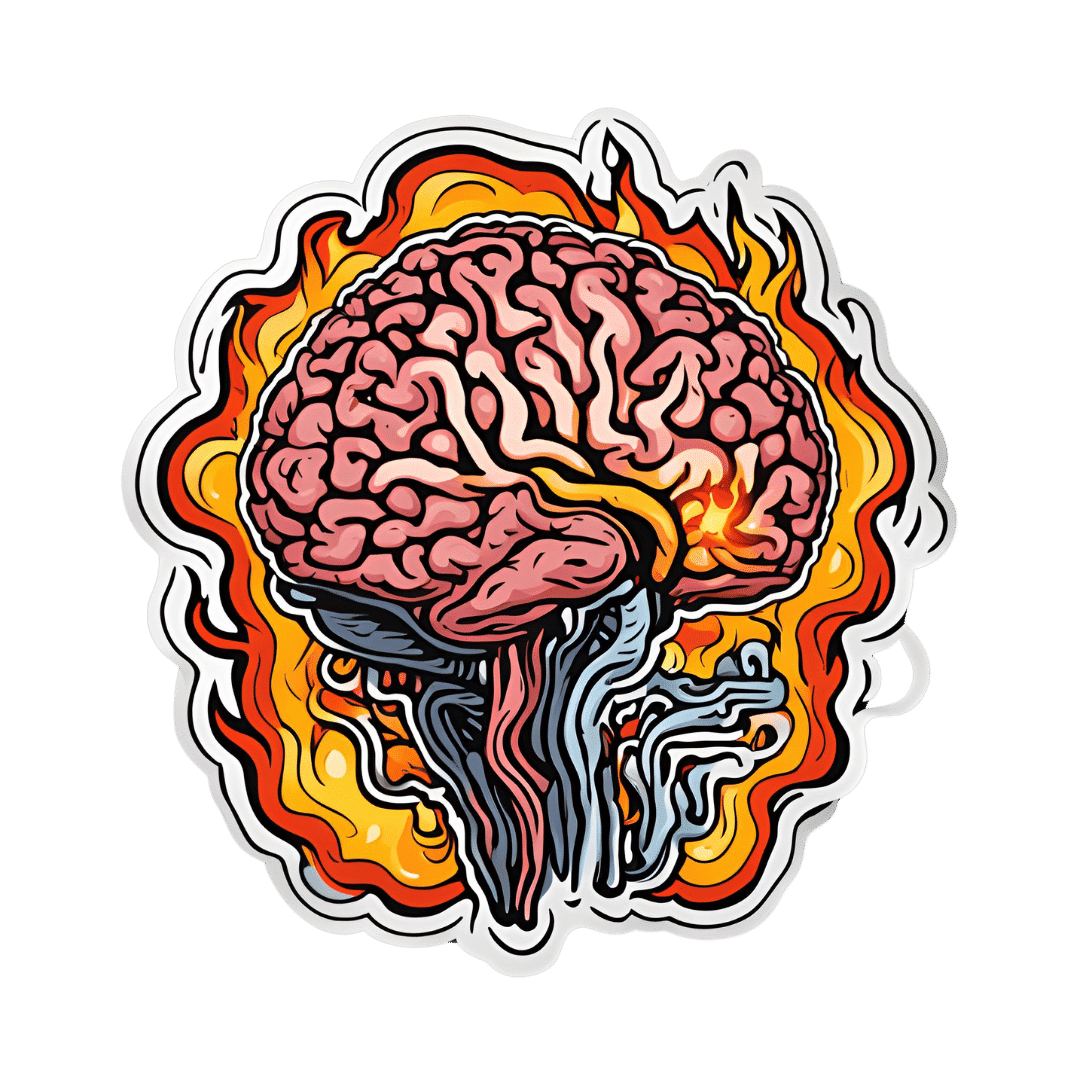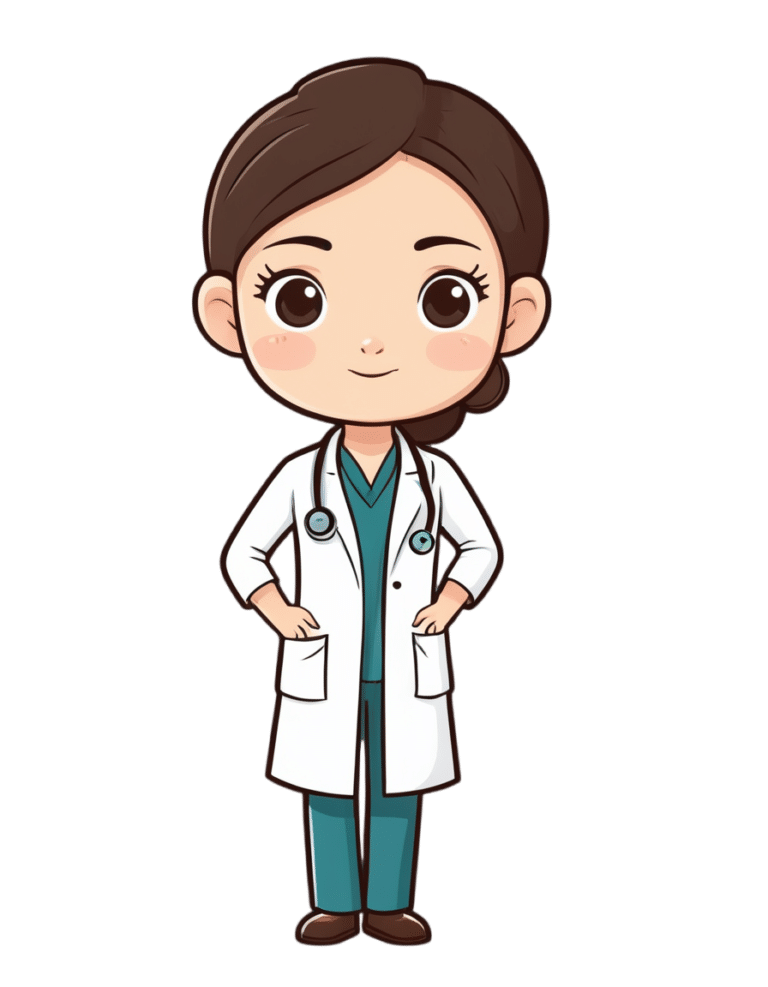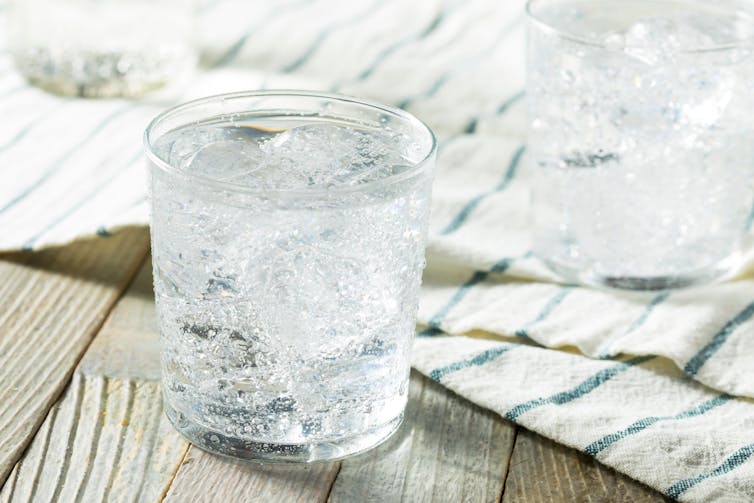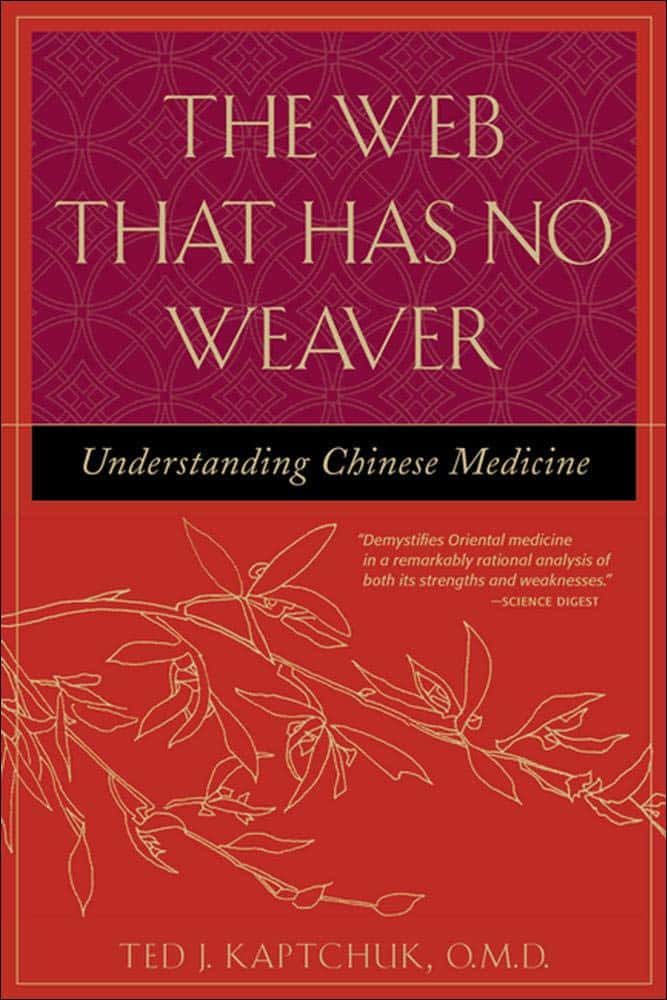
Dial Down Your Pain
10almonds is reader-supported. We may, at no cost to you, receive a portion of sales if you purchase a product through a link in this article.

This is Dr. Christiane Wolf. Is than an MD or a PhD, you ask? The answer is: yes (it is both; the latter being in psychosomatic medicine).
She also teaches Mindfulness-Based Stress Reduction, which as you may recall is pretty much the most well-evidenced* form of meditation there is, in terms of benefits:
No-Frills, Evidence-Based Mindfulness
*which is not to claim it is necessarily the best (although it also could be); rather, this means that it is the form of meditation that’s accumulated the most scientific backing in total. If another equal or better form of meditation enjoyed less scientific scrutiny, then there could an alternative out there languishing with only two and a half scientific papers to its name. However, we at 10almonds are not research scientists, and thus can only comment on the body of evidence that has been published.
In any case, today is going to be about pain.
What does she want us to know?
Your mind does matter
It’s easy to think that anything you can do with your mind is going to be quite small comfort when your nerves feel like they’re on fire.
However, Dr. Wolf makes the case for pain consisting of three components:
- the physical sensation(s)
- the emotions we have about those
- the meaning we give to such (or “the story” that we use to describe it)
To clarify, let’s give an example:
- the physical sensations of burning, searing, and occasionally stabbing pains in the lower back
- the emotions of anguish, anger, despair, self-pity
- the story of “this pain has ruined my life, is making it unbearable, will almost certainly continue, and may get worse”
We are not going to tell you to throw any of those out of the window for now (and, would that you could throw the first line out, of course).
The first thing Dr. Wolf wants us to do to make this more manageable is to break it down.
Because presently, all three of those things are lumped together in a single box labelled “pain”.
If each of those items is at a “10” on the scale of pain, then this is 10×10×10=1000.
If our pain is at 1000/10, that’s a lot. We want to leave the pain in the box, not look at it, and try to distract ourselves. That is one possible strategy, by the way, and it’s not always bad when it comes to giving oneself a short-term reprieve. We balanced it against meditation, here:
Managing Chronic Pain (Realistically)
However, back to the box analogy, if we open that box and take out each of those items to examine them, then even without changing anything, even with them all still at 10, they can each be managed for what they are individually, so it’s now 10+10+10=30.
If our pain is at 30/10, that’s still a lot, but it’s a lot more manageable than 1000/10.
On rating pain, by the way, see:
Get The Right Help For Your Pain
Dealing with the separate parts
It would be nice, of course, for each of those separate parts to not be at 10.
With regard to the physical side of pain, this is not Dr. Wolf’s specialty, but we have some good resources here at 10almonds:
- The 7 Approaches To Pain Management
- 10 Tips To Reduce Morning Pain & Stiffness With Arthritis
- Science-Based Alternative Pain Relief: When Painkillers Aren’t Helping, These Things Might
When it comes to emotions associated with pain, Dr. Wolf (who incidentally is a Buddhist and also a teacher of same, and runs meditation retreats for such), recommends (of course) mindfulness, and what in Dialectical Behavior Therapy (DBT) is called “radical acceptance” (in Buddhism, it may be referred to as being at one with things). We’ve written about this here:
“Hello, Emotions”: Radical Acceptance In CBT & DBT
Once again, the aim here is still not to throw the (often perfectly valid) emotions out of the window (unless you want to), but rather, to neutrally note and acknowledge the emotions as they arrive, á la “Hello, despair. Depression, my old foe, we meet again. Hello again, resentment.” …and so on.
The reason this helps is because emotions, much like the physical sensations of pain, are first and foremost messengers, and sometimes (as in the case of chronic pain) they get broken and keep delivering the message beyond necessity. Acknowledging the message helps your brain (and all that is attached to it) realize “ok, this message has been delivered now; we can chill about it a little”.
Having done that, if you can reasonably tweak any of the emotions (for example, perhaps that self-pity we mentioned could be turned into self-compassion, which is more useful), that’s great. If not, at least you know what’s on the battlefield now.
When we examine the story of our pain, lastly, Dr. Wolf invites us to look at how one of the biggest drivers of distress under pain is the uncertainty of how long the pain will last, whether it will get worse, whether what we are doing will make it worse, and so forth. See for example:
How long does back pain last? And how can learning about pain increase the chance of recovery?
And of course, many things we do specifically in response to pain can indeed make our pain worse, and spread:
Dr. Wolf’s perspective says:
- Life involves pain
- Pain invariably has a cause
- What has a cause, can have an end
- We just need to go through that process
This may seem like small comfort when we are in the middle of the pain, but if we’ve broken it down into parts with Dr. Wolf’s “box method”, and dealt with the first two parts (the sensations and the emotions) as well as reasonably possible, then we can tackle the third one (the story) a little more easily than we could if we were trying to come at it with no preparation.
What used to be:
“This pain has ruined my life, is making it unbearable, will almost certainly continue, and may get worse”
…can now become:
“This pain is a big challenge, but since I’m here for it whether I want to be or not, I will suffer as I must, while calmly looking for ways to reduce that suffering as I go.”
In short: you cannot “think healing thoughts” and expect your pain to go away. But you can do a lot more than you might (if you left it unexamined) expect.
Want to know more from Dr. Wolf?
We reviewed a book of hers recently, which you might enjoy:
Outsmart Your Pain – by Dr. Christiane Wolf
Take care!
Don’t Forget…
Did you arrive here from our newsletter? Don’t forget to return to the email to continue learning!
Recommended
Learn to Age Gracefully
Join the 98k+ American women taking control of their health & aging with our 100% free (and fun!) daily emails:
-
Coenzyme Q10 From Foods & Supplements
10almonds is reader-supported. We may, at no cost to you, receive a portion of sales if you purchase a product through a link in this article.
Coenzyme Q10 and the difference it makes
Coenzyme Q10, often abbreviated to CoQ10, is a popular supplement, and is often one of the more expensive supplements that’s commonly found on supermarket shelves as opposed to having to go to more specialist stores or looking online.
What is it?
It’s a compound naturally made in the human body and stored in mitochondria. Now, everyone remembers the main job of mitochondria (producing energy), but they also protect cells from oxidative stress, among other things. In other words, aging.
Like many things, CoQ10 production slows as we age. So after a certain age, often around 45 but lifestyle factors can push it either way, it can start to make sense to supplement.
Does it work?
The short answer is “yes”, though we’ll do a quick breakdown of some main benefits, and studies for such, before moving on.
First, do bear in mind that CoQ10 comes in two main forms, ubiquinol and ubiquinone.
Ubiquinol is much more easily-used by the body, so that’s the one you want. Here be science:
What is it good for?
Benefits include:
- Against aging
- Against skin cancer
- Against breast cancer
- Against prostate cancer
- Against heart failure
- Against obesity
- Against diabetes
- Against Alzheimer’s
- Against Parkinson’s
Can we get it from foods?
Yes, and it’s equally well-absorbed through foods or supplementation, so feel free to go with whichever is more convenient for you.
Read: Intestinal absorption of coenzyme Q10 administered in a meal or as capsules to healthy subjects
If you do want to get it from food, you can get it from many places:
- Organ meats: the top source, though many don’t want to eat them, either because they don’t like them or some of us just don’t eat meat. If you do, though, top choices include the heart, liver, and kidneys.
- Fatty fish: sardines are up top, along with mackerel, herring, and trout
- Vegetables: leafy greens, and cruciferous vegetables e.g. cauliflower, broccoli, sprouts
- Legumes: for example soy, lentils, peanuts
- Nuts and seeds: pistachios come up top; sesame seeds are great too
- Fruit: strawberries come up top; oranges are great too
If supplementing, how much is good?
Most studies have used doses in the 100mg–200mg (per day) range.
However, it’s also been found to be safe at 1200mg (per day), for example in this high-quality study that found that higher doses resulted in greater benefit, in patients with early Parkinson’s Disease:
Effects of coenzyme Q10 in early Parkinson disease: evidence of slowing of the functional decline
Wondering where you can get it?
We don’t sell it (or anything else for that matter), and you can probably find it in your local supermarket or health food store. However, if you’d like to buy it online, here’s an example product on Amazon
Share This Post
-
Is still water better for you than sparkling water?
10almonds is reader-supported. We may, at no cost to you, receive a portion of sales if you purchase a product through a link in this article.
Still or sparkling? It’s a question you’ll commonly hear in a café or restaurant and you probably have a preference. But is there any difference for your health?
If you love the fizz, here’s why you don’t have to pass on the sparkling water.
Brent Hofacker/Shutterstock What makes my water sparkle?
This article specifically focuses on comparing still filtered water to carbonated filtered water (called “sparkling water” or “unflavoured seltzer”). Soda water, mineral water, tonic water and flavoured water are similar, but not the same product.
The bubbles in sparkling water are created by adding carbon dioxide to filtered water. It reacts to produce carbonic acid, which makes sparkling water more acidic (a pH of about 3.5) than still (closer to neutral, with a pH around 6.5-8.5).
Which drink is healthiest?
Water is the best way to hydrate our bodies. Research shows when it comes to hydration, still and sparkling water are equally effective.
Some people believe water is healthier when it comes from a sealed bottle. But in Australia, tap water is monitored very carefully. Unlike bottled water, it also has the added benefit of fluoride, which can help protect young children against tooth decay and cavities.
Sparkling or still water is always better than artificially sweetened flavoured drinks or juices.
Isn’t soda water bad for my teeth and bones?
There’s no evidence sparkling water damages your bones. While drinking a lot of soft drinks is linked to increased fractures, this is largely due to their association with higher rates of obesity.
Sparkling water is more acidic than still water, and acidity can soften the teeth’s enamel. Usually this is not something to be too worried about, unless it is mixed with sugar or citrus, which has much higher levels of acidity and can harm teeth.
However, if you grind your teeth often, the softening could enhance the damage it causes. If you’re undertaking a home whitening process, sparkling water might discolour your teeth.
In most other cases, it would take a lot of sparkling water to pass by the teeth, for a long period of time, to cause any noticeable damage.
How does drinking water affect digestion?
There is a misconception drinking water (of any kind) with a meal is bad for digestion.
While theoretically water could dilute stomach acid (which breaks down food), the practice of drinking it doesn’t appear to have any negative effect. Your digestive system simply adapts to the consistency of the meal.
Some people do find that carbonated beverages cause some stomach upset. This is due to the build-up of gases, which can cause bloating, cramping and discomfort. For people with an overactive bladder, the acidity might also aggravate the urinary system.
Interestingly, the fizzy “buzz” you feel in your mouth from sparkling water fades the more you drink it.
Is cold water harder to digest?
You’ve chosen still or sparkling water. What about its temperature?
There are surprisingly few studies about the effect of drinking cold water compared to room temperature. There is some evidence colder water (at two degrees Celsius) might inhibit gastric contractions and slow down digestion. Ice water may constrict blood vessels and cause cramping.
However other research suggests drinking cold water might temporarily boost metabolism, as the body needs to expend energy to warm it up to body temperature. This effect is minimal and unlikely to lead to significant weight loss.
Which water wins?
The bottom line is water is essential, hydrates us and has countless other health benefits. Water, with carbonated bubbles or without, will always be the healthiest drink to choose.
And if you’re concerned about any impact to teeth enamel, one trick is to follow sparkling water with a glass of still. This helps rinse the teeth and return your mouth’s acidity back to normal.
Christian Moro, Associate Professor of Science & Medicine, Bond University and Charlotte Phelps, Senior Teaching Fellow, Medical Program, Bond University
This article is republished from The Conversation under a Creative Commons license. Read the original article.
Share This Post
-
Sesame Seeds vs Poppy Seeds – Which is Healthier?
10almonds is reader-supported. We may, at no cost to you, receive a portion of sales if you purchase a product through a link in this article.
Our Verdict
When comparing sesame seeds to poppy seeds, we picked the poppy seeds.
Why?
It’s close, and they’re both very respectable seeds!
In terms of macros, their protein content is the same, while poppy seeds have a little less fat and more carbs, as well as slightly more fiber. A moderate win for poppy seeds on this one.
About that fat… The lipid profiles here see poppy seeds with (as a percentage of total fat, so notwithstanding that poppy seeds have a little less fat overall) more polyunsaturated fat and less saturated fat. Another win for poppy seeds in this case.
In the category of vitamins, poppy seeds contain a lot more vitamins B5 & E while sesame seeds contain notably more vitamins B3, B6 and choline. Marginal win for sesame this time.
When it comes to minerals, poppy seeds contain rather more calcium, phosphorus, potassium, and manganese, while sesame seeds contain more copper, iron, and selenium. Marginal win for poppies here.
Note: it is reasonable to wonder about poppy seeds’ (especially unwashed poppy seeds’) opiate content. Indeed, they do contain opiates, and levels do vary, but to give you an idea: you’d need to eat, on average, 1kg (2.2lbs) of poppy seeds to get the same opiate content as a 30mg codeine tablet.
All in all, adding up the wins in each section, this one’s a moderate win for poppy seeds, but of course, enjoy both in moderation!
Want to learn more?
You might like to read:
- Chia Seeds vs Flax Seeds – Which is Healthier?
- Sunflower Seeds vs Pumpkin Seeds – Which is Healthier?
- Hemp Seeds vs Flax Seeds – Which is Healthier?
Take care!
Share This Post
Related Posts
-
The Web That Has No Weaver – by Ted Kaptchuk
10almonds is reader-supported. We may, at no cost to you, receive a portion of sales if you purchase a product through a link in this article.
At 10almonds we have a strong “stick with the science” policy, and that means peer-reviewed studies and (where such exists) scientific consensus.
However, in the spirit of open-minded skepticism (i.e., acknowledging what we don’t necessarily know), it can be worth looking at alternatives to popular Western medicine. Indeed, many things have made their way from Traditional Chinese Medicine (or Ayurveda, or other systems) into Western medicine in any case.
“The Web That Has No Weaver” sounds like quite a mystical title, but the content is presented in the cold light of day, with constant “in Western terms, this works by…” notes.
The author walks a fine line of on the one hand, looking at where TCM and Western medicine may start and end up at the same place, by a different route; and on the other hand, noting that (in a very Daoist fashion), the route is where TCM places more of the focus, in contrast to Western medicine’s focus on the start and end.
He makes the case for TCM being more holistic, and it is, though Western medicine has been catching up in this regard since this book’s publication more than 20 years ago.
The style of the writing is very easy to follow, and is not esoteric in either mysticism or scientific jargon. There are diagrams and other illustrations, for ease of comprehension, and chapter endnotes make sure we didn’t miss important things.
Bottom line: if you’re curious about Traditional Chinese Medicine, this book is the US’s most popular introduction to such, and as such, is quite a seminal text.
Click here to check out The Web That Has No Weaver, and enjoy learning about something new!
Don’t Forget…
Did you arrive here from our newsletter? Don’t forget to return to the email to continue learning!
Learn to Age Gracefully
Join the 98k+ American women taking control of their health & aging with our 100% free (and fun!) daily emails:
-
Rebounding Into The Best Of Health
10almonds is reader-supported. We may, at no cost to you, receive a portion of sales if you purchase a product through a link in this article.
“Trampoline” is a brand-name that’s been popularized as a generic name, and “rebounding”, the name used in this video, is the same thing as “trampolining”. With that in mind, let us bounce swiftly onwards:
Surprising benefits
It’s easy to think “isn’t that cheating?” to the point that such “cheating” could be useless, since surely the device is doing most of the work?
The thing is, while indeed it’s doing a lot of the work for you, your muscles are still doing a lot—mostly stabilization work, which is of course a critical thing for our muscles to be able to do. While it’s rare that we need to do a somersault in everyday life, it’s common that we have to keep ourselves from falling over, after all.
It also represents a kind of gentle resistance exercise, and as such, improves bone density—something first discovered during NASA research for astronauts. Other related benefits pertain to the body’s ability to deal with acceleration and deceleration; it also benefits the lymphatic system, which unlike the blood’s circulatory system, has no pump of its own. Rebounding does also benefit the cardiovascular system, though, as now the heart gets confused (in the healthy way, a little like it gets confused with high-intensity interval training).
Those are the main evidence-based benefits; anecdotally (but credibly, since these things can be said of most exercise) it’s also claimed that it benefits posture, improves sleep and mood, promotes weight loss and better digestion, reduces bloating, improves skin (the latter being due to improved circulation), and alleviates arthritis (most moderate exercise improves immune response, and thus reduces chronic inflammation, so again, this is reasonable, even if anecdotal).
For more details on all of these and more, enjoy:
Click Here If The Embedded Video Doesn’t Load Automatically!
Want to learn more?
You might also like to read:
- Exercise Less, Move More
- How To Do HIIT (Without Wrecking Your Body)
- Resistance Is Useful! (Especially As We Get Older)
- HIIT, But Make It HIRT
- The Lymphatic System Against Cancer & More
Take care!
Don’t Forget…
Did you arrive here from our newsletter? Don’t forget to return to the email to continue learning!
Learn to Age Gracefully
Join the 98k+ American women taking control of their health & aging with our 100% free (and fun!) daily emails:
-
Currants vs Grapes – Which is Healthier?
10almonds is reader-supported. We may, at no cost to you, receive a portion of sales if you purchase a product through a link in this article.
Our Verdict
When comparing currants to grapes, we picked the currants.
Why?
First, a note on nomenclature: when we say “currants”, we are talking about actual currants, of the Ribes genus, and in this case (as per the image) red ones. We are not talking about “currants” that are secretly tiny grapes that also get called currants in the US. So, there are important botanical differences here, beyond how they have been cultivated; they are literally entirely different plants.
So, about those differences…
In terms of macros, currants have nearly 5x the fiber, while grapes are slightly higher in carbs. So there’s an easy choice here in terms of fiber and on the glycemic index front; currants win easily.
In the category of vitamins, currants have more of vitamins B5, B9, C, and choline, while grapes have more of vitamins A, B1, B2, B3, B6, E, and K. So, a win for grapes in this round.
When it comes to minerals, currants have more calcium, copper, iron, magnesium, phosphorus, potassium, selenium, and zinc, while grapes have more manganese. A win, therefore, for currants again this time.
In terms of polyphenols, currants have a lot more in terms of total polyphenols, including (as a matter of interest) approximately 5x the resveratrol content compared to grapes—and that’s compared to black grapes, which are the “best” kind of grapes for such. Grapes really aren’t a very good source of resveratrol; people just really like the idea of red wine being a health food, so it has been talked up a lot and got a popular reputation despite its extreme paucity of nutritional value.
In any case, adding up the sections makes for a clear overall win for currants, but by all means enjoy either or both; diversity is good!
Want to learn more?
You might like:
21 Most Beneficial Polyphenols & What Foods Have Them
Enjoy!
Don’t Forget…
Did you arrive here from our newsletter? Don’t forget to return to the email to continue learning!
Learn to Age Gracefully
Join the 98k+ American women taking control of their health & aging with our 100% free (and fun!) daily emails:








